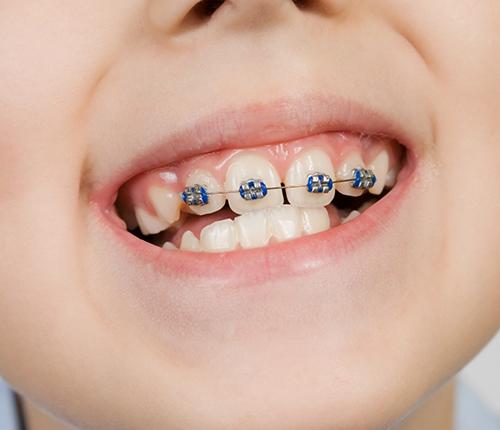get started?
Consultation

What is the difference between early orthodontic treatment and regular orthodontic treatment, and why might my child need early treatment? How will early Phase 1 orthodontic treatment from our Bend orthodontist benefit my child in the long run?
These are just a few of the questions surrounding the topic of early orthodontic treatment for children. The American Association of Orthodontists recommends that children see an orthodontist as early as age seven. At this point, the orthodontist will evaluate whether (and when) your child will need orthodontic treatment.

Early treatment (also known as Phase 1 orthodontics) typically begins around age eight or nine. The goal of this orthodontic treatment is to correct the growth of the jaw and certain bite problems, such as underbites, overbites, and crossbites. Additionally, it can make room for permanent teeth to come in properly, lessening the chance of extractions in the future. Usually, this is accomplished with an expander, a space maintainer, or specialized braces.

Here are a few signs that your child may be a candidate for early orthodontic treatment:
If your child is between the ages of seven and eight and shows signs of needing orthodontic care, or if you have been directed by your family dentist to visit the orthodontist, please contact our orthodontic office and schedule an appointment. Our dedicated orthodontist will provide your child with an initial exam and discuss with you the best steps to take toward caring for their smile.

Orthodontic problems such as crowding of the teeth, too much space between the teeth, jaw growth problems, protruding teeth, and bad bites can be inherited or caused by injury to the mouth, early or late loss of baby teeth, or thumb-sucking habits. Fortunately, early orthodontic treatment can address problems like these before they result in low self-esteem, trouble chewing, and difficulty enunciating clearly.
It's also worth noting that early orthodontic treatment can sometimes prevent the need for tooth extractions and oral surgery down the line. In other words, receiving early orthodontic treatment as a child can help prevent the need for orthodontics as an adult, as well as leave little to no chance for extraction or surgery in the future.
If we have identified your child as a candidate for Phase 1 treatment at Struble Orthodontics, chances are that they have a dental issue that won’t be resolved on its own. In fact, waiting can allow the problem to get worse, requiring more costly and uncomfortable treatments to solve. A few crooked or crowded teeth are easily correctable with little discomfort if caught early. This gives your child a better chance of developing a healthy smile on their own or prepares them for further orthodontic treatment once they’re ready.
Early orthodontics are designed to address multiple tooth and jaw issues in their beginning phases before they can do any lasting damage, such as:
We use orthodontic treatments to create space in your child’s mouth and help guide their developing pearly whites into better positions. This can be crucial for later progress, such as the proper eruption of secondary (adult) teeth and ensuring that their permanent smile grows straight and uniform.
Because Phase 1 orthodontics isn’t as complex as later phases of treatment, the tools and appliances are a bit more simplistic. For a child with overcrowded teeth, we may use a palate expander to gently widen the space in their upper jaw. Space maintainers keep adjacent teeth from shifting if a baby tooth falls out too early. This gives the permanent tooth underneath time to erupt and fill the gap. Limited braces are a special type of orthodontic appliance that helps keep specific teeth in line for the proper development of the jaw. Another tool is a Herbst appliance that, in conjunction with steel crowns, can correct jaw imbalance and improve the way a child’s teeth fit together.
It is possible that some of the costs of your child’s Phase 1 orthodontic treatment could be covered by your dental insurance. However, it’s important to note that not all plans or providers are the same. While some providers may cover specific cases or parts of Phase 1 treatment, others will not. Our office has a lot of experience working with various insurance providers and will go through your information with you. Before your child’s treatment begins, you’ll know how much your insurance covers and where we can help you with the rest through a personalized payment plan.




